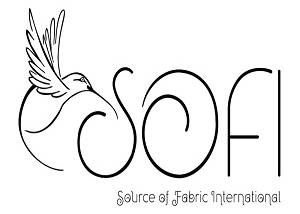Understanding fabric composition is crucial for anyone involved in textiles, whether you’re a fashion designer, a sewing enthusiast, or simply someone who loves quality clothing. This beginner’s guide aims to demystify fabric composition, helping you make informed decisions about your fabric choices. By the end of this article, you’ll have a solid grasp of fabric types, their properties, and how to choose the right fabric for your needs.
What is Fabric Composition?
Fabric composition refers to the types of fibers that make up a fabric and their respective percentages. This information is vital because the fibers’ properties significantly influence the fabric’s characteristics, such as texture, durability, breathability, and care requirements. Understanding fabric composition allows you to select materials that best suit your project or wardrobe needs.
Common Types of Fabric Fibers
- Natural Fibers
- Cotton: Known for its softness, breathability, and moisture absorption. Ideal for everyday wear.
- Wool: Excellent for insulation and warmth, often used in winter clothing.
- Silk: Luxurious and smooth, silk is perfect for high-end fashion and special occasions.
- Linen: Durable and breathable, linen is great for summer clothing and home textiles.
- Synthetic Fibers
- Polyester: Durable, resistant to shrinking and stretching, and quick-drying. Common in activewear.
- Nylon: Strong and elastic, often used in hosiery and swimwear.
- Acrylic: Lightweight and warm, frequently used as a wool substitute in sweaters and blankets.
- Spandex (Lycra): Highly elastic, used in sportswear and clothing that requires stretch.
- Blended Fibers
- Combining different fibers can enhance the fabric’s properties. For example, a cotton-polyester blend combines the softness of cotton with the durability and wrinkle resistance of polyester.
Why Fabric Composition Matters
Choosing the right fabric composition is essential for various reasons:
- Comfort: The fibers’ properties affect how the fabric feels against the skin.
- Durability: Some fibers are more resistant to wear and tear than others.
- Care Requirements: Different fibers have specific washing and maintenance needs.
- Functionality: The right fabric can enhance performance, such as moisture-wicking in sportswear or insulation in winter clothing.
How to Read Fabric Labels
Fabric labels provide essential information about the fabric’s composition. Here’s what to look for:
- Fiber Content: Listed by percentage, e.g., 60% cotton, 40% polyester.
- Care Instructions: Symbols indicating how to wash, dry, and iron the fabric.
- Country of Origin: Sometimes included to indicate where the fabric was made.
Tips for Choosing the Right Fabric
- Consider the Project: Different projects require different fabrics. For instance, a summer dress would benefit from a breathable fabric like cotton or linen, while a winter coat would need insulating materials like wool.
- Check the Drape: The way a fabric falls or drapes can significantly impact the final look of a garment.
- Test for Comfort: If possible, feel the fabric against your skin to ensure it meets your comfort needs.
- Evaluate Durability: Consider how often the item will be worn and washed. Durable fabrics are better for frequently used items.
- Understand Care Needs: Choose fabrics that align with your willingness to follow care instructions. Some fabrics require special care, while others are low-maintenance. Read More About 3 ways to attach stretch lace to knit fabrics.
Conclusion
Understanding fabric composition is a fundamental skill for anyone involved in the world of textiles. By knowing the different types of fibers and their properties, you can make better choices for your projects and wardrobe. Remember always to check fabric labels and consider the intended use, comfort, durability, and care requirements of the fabric. With this knowledge, you’ll be well-equipped to navigate the world of fabrics confidently. By following this beginner’s guide to understanding fabric composition, you can make informed decisions that enhance the quality and functionality of your textile projects. For more information on fabric services, including Fabric Printing, Finishing, Laundry, Dyeing Services, Sourcing Services, and Production Services, visit SOFI.


